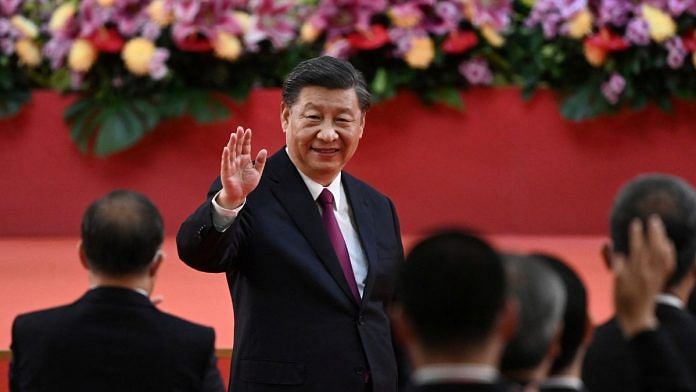
Thank you dear subscribers, we are overwhelmed with your response.
Your Turn is a unique section from ThePrint featuring points of view from its subscribers. If you are a subscriber, have a point of view, please send it to us. If not, do subscribe here: https://theprint.in/
The enigma of Chinese checkers. What is playing out behind the wall? While the whole world out there is fretting over obesity and overweight, I have lost a couple of pounds over the years. “A good thing” you will say. My wife thinks otherwise. I have to eat the extra roti at lunch every day. To constantly monitor my weight (weight gain, to be precise) she got a sleek looking digital weighing scale. After the initial euphoria, I had gained a 100g in a couple of days, it was time to put away the scale for a few days. In my old ways, I figured that this thing was to be switched off before mothballing. It was in the process of finding a non-existent switch, I stumbled on the manufacturer’s label which proclaimed clearly “Made in China”. The Buddha too has said that war is the last resort for peace. Do war and conflicts really solve international disputes and lead to peace? In the few decades after the second world war, The Americans have proved otherwise, time and again. In this circumstance, the question is “For solving border issues with China, is war / conflict a solution?” Yes. But the frontier of conflict is not in the Himalayas. The real war with China may not be at the LAC, which admittedly is more fiction than reality. In this regard we need to examine the real intention of China in its “aggressions” on the LAC and other parts in the South East and the Far East. China has built an invisible twenty-first century wall around the Nation, surpassed only by N’ Korea. It is impossible for those outside (and maybe inside too) to surely know what really goes on behind the wall in regard to its internal dynamics. I had the occasion to speak to some Chinese professionals while I was in the USA. It seemed to me that they were either unaware of a lot that is happening within China or were reluctant speak up. I suspect it is the former, else the Americans would have elicited all information. It could also be that the Americans know exactly what is happening within China and are incapable of opposing them or they deliberately avoid doing it in deference to the economy. Either way as of now it is a win-win situation for China. The border pinpricks (with names like Depsang, Pangong etc…) are just that…. pin pricks. The aim is “economic colonization”. What we know is what goes on outside this wall. By following a state controlled capitalistic economy and democratic ways while dealing with the world outside, China has managed to exponentially grow its economy in the past four decades or so, even threatening to indirectly control most of the economy in the developed Nations. But vibrations of an unease percolates though the wall to the outside. There is an air of uncertainty, possibly fueled by the duel between Capitalism and CCP. By all accounts and the occasional escaping signals from inside China, their main problems are fear of internal unrest, the suppression of dissent, and the military occupation of border regions (such as Tibet) that consume the majority of money, manpower, and attention within the PLA. In the circumstance China can’t pursue hegemonic aspirations in Asia through military power. The Chinese administration of Tibet indicates the PLA is very aware of the cost and time commitment necessary to hold even a sparsely populated region in the face of minimal resistance. This fact would seem to mitigate aspirations of territorial aggrandizement at the expense of China’s neighbors. Now, getting back to the “weighing scale”. For decades China has been fighting wars on three different fronts 1. Internal dissent 2. Exhibiting intentions of expanding its borders, (by occupying some disputed territories in the area of South China sea et…) in order to preserve its borders – LAC actions are an offshoot. 3. Economic dominance in developed economies as their cheap manufacturer and in the underdeveloped world with monetary assistance by providing loans, a la the proverbial loan sharks. For this China has developed its own technologies. The “Weighing scale” is an example of the third war in which it has made great inroads all over the world including the “impregnable” West. Of the 3 wars, China is most scared of internal dissidence. Influence of democratic Taiwan and the world support for a Free Taiwan, is seen by China as being most dangerous to its existence. On the economic front, China is evidencing the vulnerability in the long-term coexistence of statecontrolled Capitalism and Communism. Those of us on the outside, should take note of the cracks in the modern “Chinese wall”. This may have quite an effect on the already reeling world economy. This is the most vulnerable war zone in the world now. Tailpiece: That is not to say that India should not have its own security doctrines, strategies and military to counter the needling aggressions on the LAC. We definitely have to counter THAT threat militarily. In the process we should not be losing weight on the economic front.
These pieces are being published as they have been received – they have not been edited/fact-checked by ThePrint.


COMMENTS